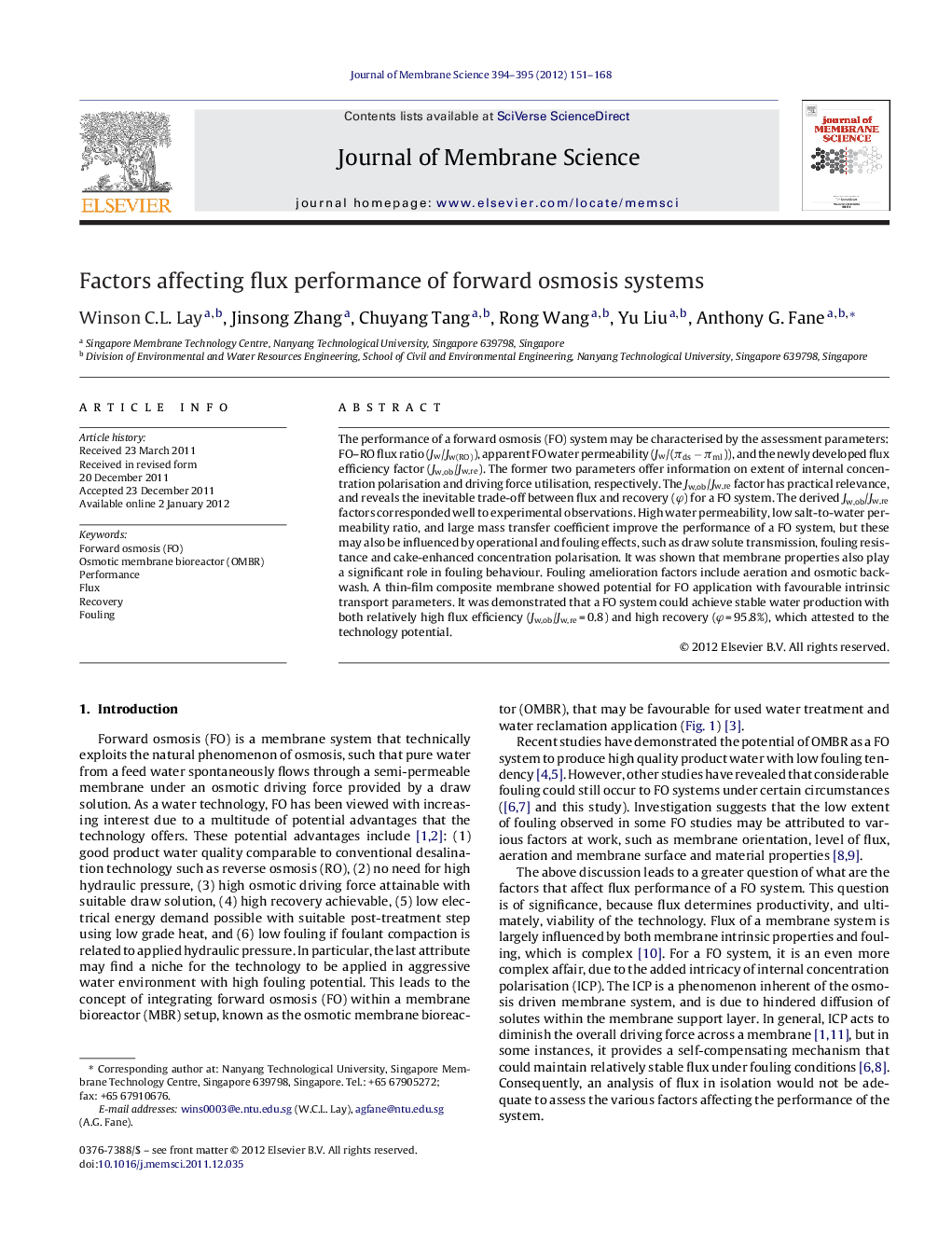| کد مقاله | کد نشریه | سال انتشار | مقاله انگلیسی | نسخه تمام متن |
|---|---|---|---|---|
| 635146 | 1456089 | 2012 | 18 صفحه PDF | دانلود رایگان |

The performance of a forward osmosis (FO) system may be characterised by the assessment parameters: FO–RO flux ratio (Jw/Jw(RO)), apparent FO water permeability (Jw/(πds − πml)), and the newly developed flux efficiency factor (Jw,ob/Jw,re). The former two parameters offer information on extent of internal concentration polarisation and driving force utilisation, respectively. The Jw,ob/Jw,re factor has practical relevance, and reveals the inevitable trade-off between flux and recovery (φ) for a FO system. The derived Jw,ob/Jw,re factors corresponded well to experimental observations. High water permeability, low salt-to-water permeability ratio, and large mass transfer coefficient improve the performance of a FO system, but these may also be influenced by operational and fouling effects, such as draw solute transmission, fouling resistance and cake-enhanced concentration polarisation. It was shown that membrane properties also play a significant role in fouling behaviour. Fouling amelioration factors include aeration and osmotic backwash. A thin-film composite membrane showed potential for FO application with favourable intrinsic transport parameters. It was demonstrated that a FO system could achieve stable water production with both relatively high flux efficiency (Jw,ob/Jw,re = 0.8) and high recovery (φ = 95.8%), which attested to the technology potential.
► Flux efficiency factor is a new method for assessing performance of FO systems.
► In situ osmotic backwash shows potential to be applied in the practice.
► The TFC membranes show promising intrinsic properties: initial flux > 20 L m−2 h−1.
► The CTA membranes show good fouling resistance: flux efficiency factor ≥ 0.8.
► FO systems can achieve high recovery (>95%).
Journal: Journal of Membrane Science - Volumes 394–395, 15 March 2012, Pages 151–168